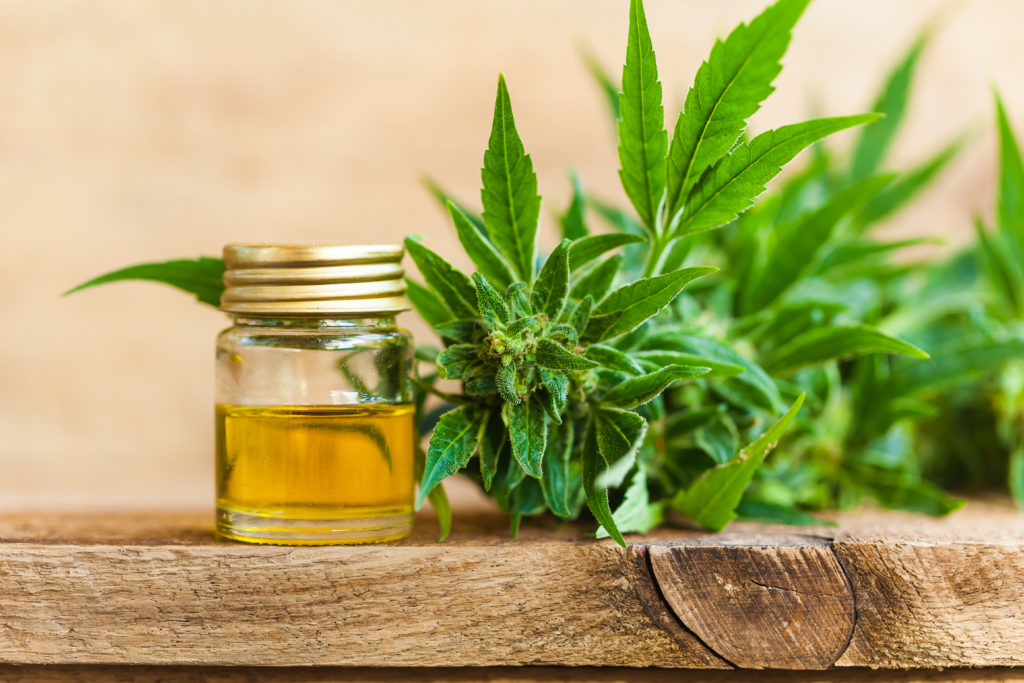CBD and CBDA: What’s The Difference And Which Is Best For Me?
Cannabidiol (CBD) is a well-known component of hemp with diverse health benefits. Still, many people are surprised to learn that the hemp plant does not directly produce CBD. The plant actually produces cannabidiolic acid (CBDA) which converts to CBD slowly at room temperature, or rapidly when exposed to high temperatures.
Remarkably safe and therapeutic, CBD is the exciting focus of popular media, legislation related to cannabis and medical research. Though we’re learning more about CBD’s therapeutic potential all the time, it is important to note that the high-quality human research on these cannabinoids is still emerging and there are still many unknowns. At this time, we know even less about CBDA than CBD. However, early findings show that even small amounts of CBDA can have significant beneficial physiologic effects, and this is exactly what I have observed in my clinical practice.
How does CBD work and what does it do?
By influencing the endocannabinoid system and other biological systems within our bodies, CBD can provide relief from pain, spasticity, nausea, anxiety, seizures, and inflammation. In fact, 65 distinct pharmacologic targets within our bodies have been identified in laboratory studies. All may not be relevant to real-world dosing, but there are a few I find extremely relevant. CBD is a serotonin receptor (5-HT1A) agonist, for example. Most are aware that serotonin is the neurotransmitter that’s related to happiness and feeling contentment — it also influences anxiety, nausea, and circulation, among many others. CBD activates the receptor similarly to serotonin, which is why so many people find CBD helpful with anxiety, focus, and other aspects of mental health. CBD also triggers the capsaicin receptor (TRPV1), a proven target for treating pain and inflammation. Finally, CBD is active at the glycine and adenosine receptors which control pain, inflammation, and nerve health.
How does CBDA work and what does it do?CBDA does not have activity at the CB1 receptor, or the enzyme (FAAH) that breaks down our endocannabinoid anandamide, like CBD does — in other words, it doesn’t seem to have the same ability to modulate the endocannabinoid system. It does, however, have several actions in common with CBD, including stimulating the serotonin and capsaicin receptors. We know that CBDA has a higher bioavailability in humans, with 5-11x better absorption in humans than CBD when taken orally. There is also some evidence-based on animal models that CBDA is stronger and more potent than CBD, not just because it’s getting absorbed better but because it’s acting more powerfully. For example, animal studies have found CBDA to be 10 times more potent than CBD in a model of seizures, 100x more potent in a model of inflammatory pain, 10,000x more potent in a model of nausea, and 50,000x more potent in a model of anxiety.

CBD and CBDA share many physiologic properties, but also have some important differences. Here are the key points to remember:
- CBDA is better absorbed when taken by mouth than CBD.
- CBDA and CBD both have anti-inflammatory properties but may act via some overlapping and other distinct mechanisms in the body. For example, unlike CBD, CBDA has been shown to inhibit the COX-2 enzyme, a common target of conventional anti-inflammatory medications.
- CBDA may be more potent than CBD for some applications based on studies of rodent models of nausea, stress-induced anxiety, inflammatory pain and seizures. We don’t know if similar results translate to humans yet, but it is possible that CBDA may be more effective than CBD at lower doses.
- CBDA is unlikely to mitigate the adverse effects of THC, a common usage for CBD. While many people appreciate the combined effects of CBD and THC, some find that CBD weakens the therapeutic effects of THC.
Which cannabinoid is best for me: CBD or CBDA?
I generally recommend starting with a trusted CBD product that contains the widest spectrum of naturally occurring terpenes, flavonoids, and at least a small amount of CBDA. I have formulated my Healer CBD (Healer Whole Plant Hemp CBD) with a 6:1 CBD:CBDA ratio because I have found this improves results at lower dosages, making the product more cost effective.
However, you should start with our Healer CBDA product if:
- You know you respond better to CBDA than CBD
- You have tried CBD in the past in moderate to high amounts (25-50 mg) and have been unsatisfied with the results
- You are using THC and don’t want your hemp product to alter its effects.
In conclusion, CBDA, the often-overlooked precursor to CBD, has incredible therapeutic potential, gaining the attention of researchers and consumers alike. While I don’t expect CBDA to completely replace CBD in our cannabis repertory, I do expect CBD users to find products containing CBDA much more potent, and some to find switching to CBDA altogether more effective for relieving their symptoms and promoting health.

About The Author:
Dr. Dustin Sulak is globally recognized as a leading cannabis clinician and pioneer of clinical applications.
He is:
- Founder of Integr8 Health, a medical practice in Maine that follows over 8,000 patients using medical cannabis and hemp;
- Co-Founder of Healer, a trusted hemp and medical cannabis brand and provider of educational content. Founded to address the challenge of producing and selling safe, easy-to-dose products and educating patients on how to best use them, Healer’s distinctive product formulas and educational material are based on Dr. Sulak’s work;
- A board member of The Society of Cannabis Clinicians.
For more information about Healer Whole Hemp Plant CBD and CBDA products and education, visit www.HealerCBD.com. For education on how to use cannabis as medicine or information about Healer, visit www.Healer.com. For more about Healer’s Certified Training program or its free cannabis education for consumers, visit healer.com/cannabis-education-training-course-and-certification-program and healer.com/cannabiseducation.

